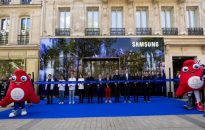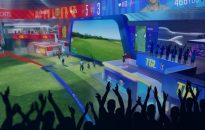Fri 6th Dec, 2024 In a groundbreaking method for training, soccer athletes are now engaging in a distinctive low-light setting aimed at boosting their visual-motor abilities. This training occurs within a specially crafted chamber, sized at 8 by 6 meters, where players participate in drills under fluctuating lighting conditions that put their coordination and reaction […]
Fri 6th Dec, 2024
In a groundbreaking method for training, soccer athletes are now engaging in a distinctive low-light setting aimed at boosting their visual-motor abilities. This training occurs within a specially crafted chamber, sized at 8 by 6 meters, where players participate in drills under fluctuating lighting conditions that put their coordination and reaction times to the test.
The training system, created by Okkulo, seeks to enhance the synergy between visual perception and physical reaction. The founder of Okkulo believes that athletes training in this confined lighting space will see improved performance in typical conditions due to a faster processing speed between the eyes and the brain. This technique is particularly advantageous for soccer players, who need to swiftly adjust to ever-changing game scenarios.
In a recent session at a cutting-edge facility in West Yorkshire, players encountered the impacts of various light types, like low blue light to sharpen visual focus and green light to assess peripheral vision. The training regimen involves sequences where soccer balls are propelled towards the athletes at high velocities, compelling them to respond quickly and accurately. Initial difficulties with ball control underscore the challenge of the subdued lighting, yet the training is structured to promote adaptation and progress over time.
A study with professional players from Sunderland AFC indicated substantial improvements in visual-motor skills after six weeks of training using Okkulo’s system. Participants demonstrated an impressive 60% enhancement in their capability to detect moving objects and a 36.3% boost in motor reaction time. These outcomes imply that the training not only elevates individual skills but also holds the potential to improve overall team performance during games.
Okkulo’s technology leverages specific light wavelengths to establish a controlled training atmosphere, which has proven to deliver superior results compared to conventional training practices. Athletes have noted a significant change in their perception and control when shifting from the low-light chamber to standard lighting conditions.
The ramifications of this study reach beyond soccer. Okkulo is pursuing partnerships with various sports teams and academic institutions to explore potential uses in other athletic fields and possible medical advantages for rehabilitation. The promise of this technology to assist in the recovery from brain injuries or other ailments presents an exciting opportunity for future exploration.
Despite the encouraging outcomes, specialists emphasize that more research is required to determine how long the advantages of this training persist and how effectively these enhancements manifest in competitive performance situations. The distinct characteristics of soccer, with its unpredictable factors, may create difficulties in replicating training conditions during real matches.
As the domain of sports science continues to progress, Okkulo signifies a major breakthrough in how athletes undergo training and preparation for competition. The fusion of technology and neuroscience into athletic conditioning could transform the landscape of sports performance, making it an exhilarating area to observe.















